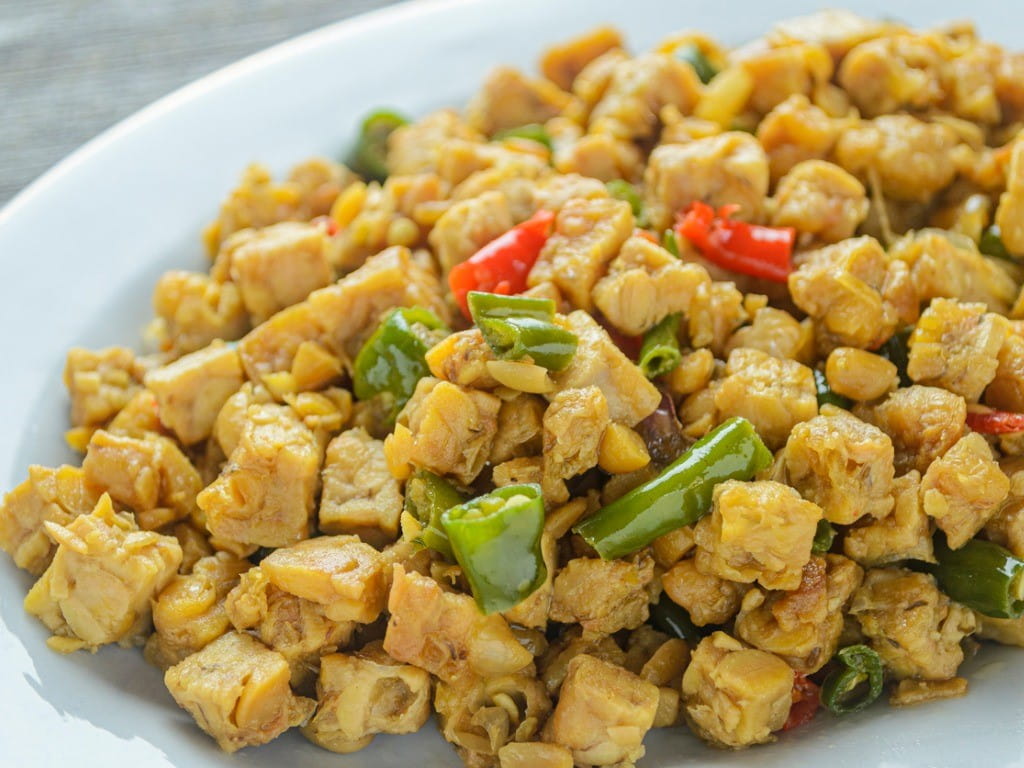Bongkrekic Acid Poisoning From Fermented Food

The Bottom Line
Bongkrekic acid is a deadly poison that is found in fermented food including wet noodles and presscake from China, Indonesia, and Mozambique. Bongkrekic acid attacks the mitochondria and can cause liver failure, kidney injury, and death. There is no safe dose of this poison.

The Full Story
Bongkrekic acid is a little-known toxin and source of food poisoning that is produced by the bacterium Burkholderia gladioli. These bacteria flourish in the presence of warm temperatures and fungal organisms—conditions that are commonly encountered in the process of food fermentation. Bongkrekic acid is not destroyed by cooking; it is odorless and tasteless, making it difficult to detect in contaminated foods. Most cases of bongkrekic acid poisoning have occurred after the consumption of locally produced fermented foods in China, Indonesia, and Mozambique. Bongkrekic acid poisoning has been reported after consumption of fermented noodles, corn flour, and beer in these regions. Tempe bongkrek, a traditional fermented presscake produced in Indonesia, has been responsible for thousands of cases of bongkrekic acid poisoning, many of which were fatal. Tempe bongkrek is now banned in much of Indonesia, although illegal production still occurs.
The toxic effects of bongkrekic acid are related to its effects on mitochondria. Mitochondria are small bodies within cells that generate energy for our bodies; bongkrekic acid interferes with cellular energy production, which results in cell damage and death. The initial symptoms of bongkrekic acid poisoning can include fatigue, dizziness, stomachache, vomiting, diarrhea, and sweating. Both high blood sugar (hyperglycemia) and low blood sugar (hypoglycemia) can occur. Severe cases may result in liver failure, kidney injury, and coma. Mortality rates range from 40 to 100%. Death from multiple organ failure can occur within a day after the initial signs and symptoms.
There is no safe dose of bongkrekic acid; doses as low as 1 mg have been fatal to humans. Because bongkrekic acid is a food-borne toxin, it is impossible to estimate how much of the poison is present in a contaminated product.
There is no antidote for bongkrekic acid poisoning. Treatment involves supportive care in a hospital, and many cases will require treatment in an intensive care unit. The best way to prevent this poisoning is to avoid consumption of fermented food products. While fermented foods often have tell-tale characteristics of spoilage such as a bad taste, foul odor, or discoloration, the absence of these features does not rule out bongkrekic acid contamination. Fermented foods might be treated with preservatives that can mask evidence of spoilage. In 2018, a family of seven in China became ill after eating wet rice noodles that were later found to be contaminated with bongkrekic acid. The noodles, which had been treated with preservatives, did not exhibit any signs of spoilage; two family members and the family dog (which was fed some of the leftover noodles) died.
Bongkrekic acid is not a common poison in the US, and you are most likely to be exposed to this dangerous toxin when traveling abroad. Avoidance of fermented foods, including presscake, wet rice noodles, and locally brewed alcohol can reduce your exposure to this dangerous poison.If someone has been exposed to bongkrekic acid, please log on to the webPOISONCONTROL® online tool for guidance or call Poison Control at 1-800-222-1222. Whether you log on or call, expert assistance is available 24 hours a day.
Kelly Johnson-Arbor, MD
Medical Toxicology Physician
Poisoned?
Call 1-800-222-1222 or
Prevention Tips
- When traveling abroad, take care to avoid fermented foods, especially locally-produced wet noodles and presscake.
- Remember that preservatives can mask the signs of food spoilage such as bad taste or odor.
- Just because a fermented food product does not appear to be spoiled does not mean that it is safe to eat.
- Seek medical attention immediately if you develop abdominal pain, vomiting, fatigue, or dizziness after eating fermented foods.
This Really Happened
In October, 2020, nine members of a family in China ate a meal of homemade noodles made from fermented corn flour. The noodles were spoiled and had been stored in the family's freezer for almost a year. Within hours of eating the noodles, all members of the family became ill. Eight of them died within 6 days after eating the noodles; the ninth died on the 7th day. The noodles were analyzed and found to contain bongkrekic acid; this poison was determined to be responsible for the family members' deaths (from Salo).
For More Information
Brower J. toxic tempeh: death by bongkrekic acid. Nature's Poisons; 2015 Jul 9 [cited 2020 Nov 8].
Bongkrekic acid. Washington: American Chemical Society; 2011 May 30 [cited 2020 Nov 8].
Bongkrek acid. Wikipedia; updated 2020 Oct 24 [cited 2020 Nov 10].
References
Winarno FG. Fermented foods of Southeast Asia. J Am Oil Chem Soc. 1979 Mar;56(3):380.
Poisoned?
Call 1-800-222-1222 or
Prevention Tips
- When traveling abroad, take care to avoid fermented foods, especially locally-produced wet noodles and presscake.
- Remember that preservatives can mask the signs of food spoilage such as bad taste or odor.
- Just because a fermented food product does not appear to be spoiled does not mean that it is safe to eat.
- Seek medical attention immediately if you develop abdominal pain, vomiting, fatigue, or dizziness after eating fermented foods.
This Really Happened
In October, 2020, nine members of a family in China ate a meal of homemade noodles made from fermented corn flour. The noodles were spoiled and had been stored in the family's freezer for almost a year. Within hours of eating the noodles, all members of the family became ill. Eight of them died within 6 days after eating the noodles; the ninth died on the 7th day. The noodles were analyzed and found to contain bongkrekic acid; this poison was determined to be responsible for the family members' deaths (from Salo).
